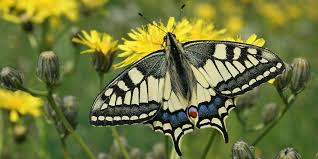WHAT IS ECOLOGY- OVERVIEW & TYPES
OVERVIEW
- Ecology is the branch of biology that studies interaction among organisms in their natural habitat, which includes biotic and abiotic components.
- The term Ecology is coined by Hanns Reiter in 1985.
- The term is derived from two Greek words “oikos” meaning “House or dwelling place” and “logos” meaning “study”.
- Ecology is definitely related with topics e.g. ecosystem, biodiversity, distribution, biomass, and populations of organisms. Ecosystem is the ecological unit where all living and non-living factor of the environment interact with each other and with their own components. Thus, organism, population, community, ecosystem, and biosphere are well comes within the discipline of ecology.
- And what often ecologist seeking that is broadly concerned with the-
Life processes of organisms, their interactions and adaptations with biophysical environment.
The movement of materials and energy flow through living communities that leads to successional development of ecosystems.
The abundance and distribution of organisms and biodiversity in the context of the environment.
BIOTIC & ABIOTIC COMPONENTS
- The biotic factors/components include living organisms like plants, animals and microorganisms,
- While abiotic components include inorganic nutrients (water, elements like N,P,K and gases like CO2, O2 etc.), organic compounds (carbohydrates, protein, lipids) and climatic factors (rainfall, temperature, wind).
Biodiversity (Biological diversity) is the variety and variability among the living organism on the earth.
It refers to the variety of living organism on the earth including terrestrial, marine and other aquatic ecosystem and ecological complexes in which they occur.
It means, it refers to every living thing, including plants, bacteria, animals, and humans.
Habitat
- Habitat can be defined as location of environmental space or region within it, where a species occur and forms community, where in biotic and abiotic components of environment interacts and with their own components.
- A habitat may be an aquatic or terrestrial environment that can be further categorized in different type of ecosystem.
- Habitat shifts provide important evidence of competition in nature where one population changes relative to the habitats that most other individuals of the species occupy.
Niche
- George Evelyn Hutchinson, a British ecologist, defined it “the set of biotic and abiotic conditions in which a species is able to persist and maintain stable population sizes.”
- Further Niche is subdivided into fundamental Niche and Realized Niche.
- The fundamental niche is the set of environmental conditions under which a species is able to persist, whereas, the realized niche is the set of environmental as well as ecological conditions under which a species persists.

GLOBAL ECOLOGY
Global ecology studies the interactions among earth’s ecosystems (terrestrial and aquatic), atmosphere and land.
It helps in understanding the large-scale interactions and their influence on the planet.
POPULATION ECOLOGY
- It is the study of dynamics of species populations and how these populations interact with the wider environment.
- A population consists of individuals of the same species that live, interact, and migrate through the same niche and habitat.
- A simple population model has four variables namely death, birth, immigration and emigration.
- Population ecology deals with the factors that change and impact the size and genetic composition of the population of organisms. It examines distribution and density of population.
- According to Malthusian growth model, “a population will grow or decline exponentially as long as the environment experienced by all individuals in the population remains constant”.
COMMUNITY ECOLOGY
Community means group of population of different species (plants, animals and microorganisms) in a given area. Therefore community ecology studies the interactions among collections of species that inhabit the same geographic area.
ECOSYSTEM ECOLOGY
An ecosystem is the ecological system or a community of living and nonliving components where both these components of the environment interact with each other.
Ecosystem consists of two components called biotic components (living factors) and A-biotic components (Non-living factors). These two components form the basic structure of an ecosystem and are linked together through nutrient cycles and energy flows.
MOLECULAR ECOLOGY
It uses various analytical techniques to study genes in an evolutionary and ecological context.
ECOLOGY & EVOLUTION
Ecology and evolution are closely related disciplines under life sciences. Ecology plays a significant role in forming new species and modifying the existing ones.
Natural selection, life history, development, adaptation, populations, and inheritance are factors which are related to ecological and evolutionary theory.
RELATION OF ECOLOGY WITH ENVIRONMENT
- The surroundings of living organisms is collectively called environment.
- The study of ecology helps to understand environment and how our various actions affect the environment.
- The environment of ecosystems includes both physical environment and biotic components.
- Ecology studies the livings in their natural habitat.
This is really interesting, You are a very skilled blogger. I’ve joined your feed and look forward to seeking more of your excellent post. Also, I’ve shared your web site in my social networks!
Thank you for your interest and also for sharing the post. keep it, if you find nice.